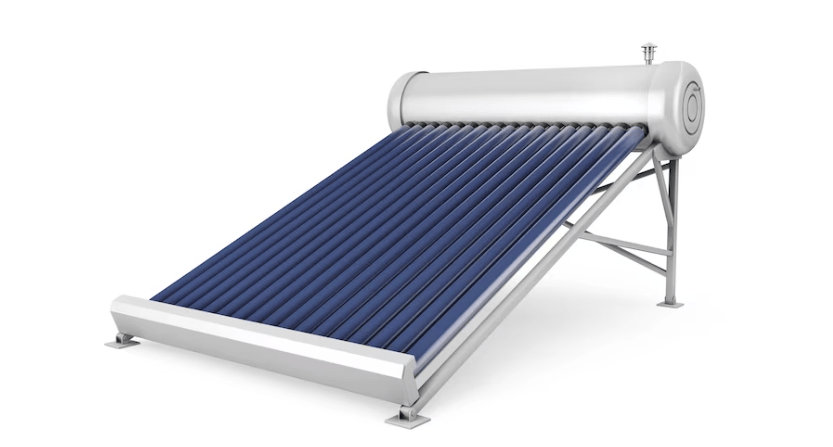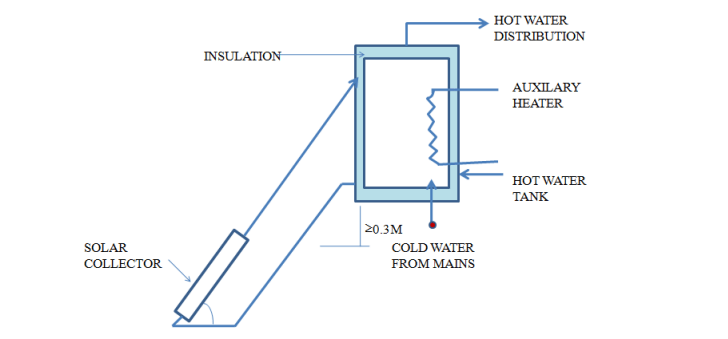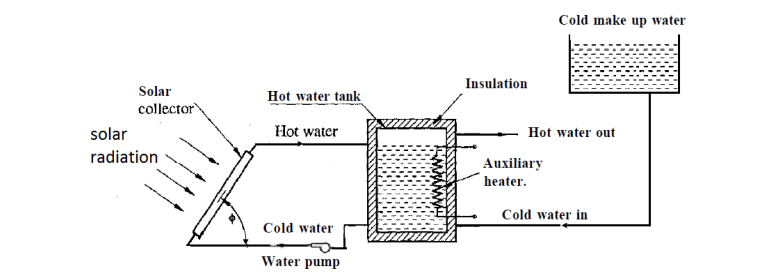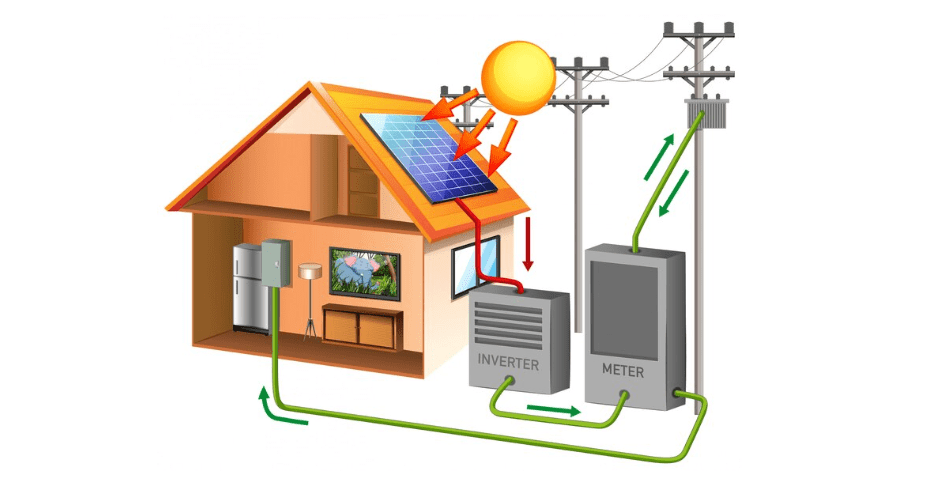Solar water heaters are an eco-friendly alternative for heating water that utilizes sunlight to generate hot water for residential and commercial use. With growing concerns about solar energy efficiency and environmental sustainability, solar water heaters have gained popularity. This blog post explores the working principles, types, and future technologies of solar water heaters.

Table of Contents
ToggleWorking Principle of Solar Water Heater
It is a solar system that uses thermal energy of sun to heat water. The basic idea behind the solar water heater is piece of black piping filled with water- and laid in the sun for the water to heat up. To heat up more water you increase the number of pipes to make a collector and add tank to store the heated water in.
The whole system is insulated to minimize heat-loss. Water is cycled through the collector several times to raise the temperature. Some system uses electric pumps to pump water through the system but this increases the cost. Alternatively, water can be made to pass through the pipes without a pump using- the thermo-syphon effect.
Basic elements of solar water heater: Flat plate collector, Storage tan, Circulation system, Control of system.
Types of solar water heater
Natural circulation/ Passive solar water heater

When hot water is taken out from the hot water outlet, the same is replaced b- cold water make-up tank fixed above the hot water tank ,water is circulated in the loop naturally due to thermo-syphon action is known as Passive or Natural circulation solar water heater. Natural circulation solar water heater may be pressurized or non-pressurized.
It is also known as thermo-syphon water heating system. Thermo-syphon uses the fact that hot water rises above cold water due to density difference.
It consist tilted solar collector facing south with transparent cover glasses, highly insulated storage tank and well insulate pipes -connecting collector & tank. The storage tank is located above level of collector at least 0.3m above the top edge of collector.
As the water in the collector pipes heats up, its density decreases and hence it rises- up into the top of the tank, colder water from the bottom of the tank has higher density and so tends to sink and enters into the collector through the lower header.
The flow continues until the water in the pipes and the tank is at the same temperature. As long as the sunshine the water will quietly circulate, getting hotter.
After sunset, the thermo-syphon system can reverse its flow direction and loss heat- to surroundings during the night. To provide heat during long, cloudy periods an electrical heater is provided in the storage tank
Force circulation / Active solar water heater

When the collector is fixed above the level of hot water tank. A pump is required- to make circulation of water in the loop ,is known as Active or Force circulation solar water heater.
The natural circulation solar water heater is normally used for domestic purpose where less amount of hot water is required. When a large amount of hot water is required for supplying process heat in an industry or in commercial utilization, a natural circulation solar water heater is not suitable.
Large arrays of flat plate collectors are then used and forced circulation is maintained with a water pump. As shown in Fig, forced circulation solar water heater in which pump is provided in cold water line. Water from a storage tank is pumped through a collector array where it is heated and then flow back into the storage tank, colder water takes it place.
The pump for maintaining the forced circulation is operated by an ON-OFF controller which senses the difference between this temperature of the water at exist of collector and suitable location inside the storage tank. The pump is switched ON whenever this difference exceeds a certain value and OFF when it falls below a certain value.
Comparision between Passive Solar heating and Active Solar heating
Passive solar heating systems
- This system operates without pumps, blowers, or other mechanical devices.
- A special building design is necessary
- In this system, the solar radiations are collected by an element of the structure itself. The various elements of the buildings like walls, roof, windows, partitions etc., are so selected and so architecturally integrated that they participate in the collection, storage, transportation and distribution of thermal energy.
- These systems are suitable where there is ample winter sunshine and an unobstructed southern exposure is possible.
- . It is less expensive than active system to construct and operate.
Active solar heating system
- In this system, pumps, blowers, or other mechanical devices are required to circulate the working fluid for transportation of heat.
- A special building design is not necessary.
- In this heating system, the solar radiations are collected using some kind of separate collectors. Solar energy may be stored in sensible heat storage materials, or in latent heat storage materials and the energy is redistributed in the building space using pumps, blowers, fans etc.
- Active system can be employed to almost any location and types of building.
- It is more expensive than passive system to construct and operate.
Future technology in Solar Water Heater
Advanced Absorber Coatings: Researchers are developing new absorber coatings that can improve the efficiency of solar water heaters by increasing the absorption of sunlight and reducing heat loss.
Improved Storage Systems: New storage materials and designs are being developed to improve the thermal efficiency and reliability of solar water heaters.
Integration with Heat Pumps: Combining solar water heaters with heat pumps can further enhance their efficiency, especially in areas with limited sunlight or during the winter months.
Smart Controls: Smart controls and monitoring systems can optimize the performance of solar water heaters by adjusting the operation based on weather conditions and hot water demand.



Pingback: Electric heating: Introduction, Heating method and advantages - Electricalsphere
Pingback: Solar Collector: Definition, Types and Flat plate Solar collector - Electricalsphere
Excellent post. Keep posting such kind of info on your site.
Im really impressed by your blog.
Hey there, You’ve done a fantastic job. I will definitely digg it and in my opinion recommend to my friends.
I’m sure they’ll be benefited from this site.
Thanks for appreciation
Please share my web to your friends group
Follow my social group